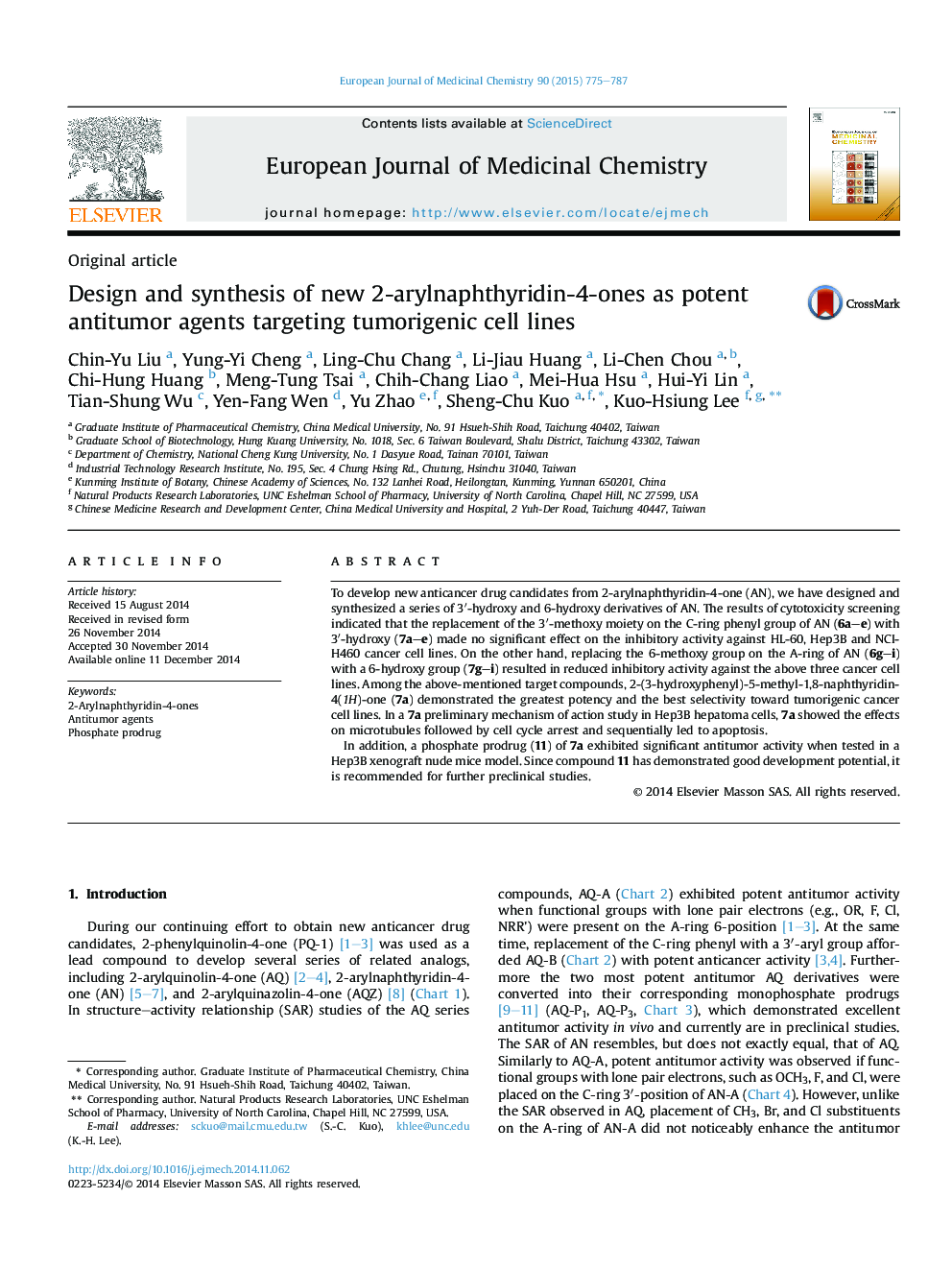| Article ID | Journal | Published Year | Pages | File Type |
|---|---|---|---|---|
| 1395521 | European Journal of Medicinal Chemistry | 2015 | 13 Pages |
•2-Arylnaphthyridin-4-ones were synthesized as potent cytotoxic agents.•2-(3-Hydroxyphenyl)-5-methyl-1,8-naphthyridin-4(1H)-one (7a) was most potent.•A phosphate prodrug (11) of 7a exhibited significant antitumor activity in vivo.•Compound 11 has good development potential as an antitumor agent.
To develop new anticancer drug candidates from 2-arylnaphthyridin-4-one (AN), we have designed and synthesized a series of 3′-hydroxy and 6-hydroxy derivatives of AN. The results of cytotoxicity screening indicated that the replacement of the 3′-methoxy moiety on the C-ring phenyl group of AN (6a–e) with 3′-hydroxy (7a–e) made no significant effect on the inhibitory activity against HL-60, Hep3B and NCI-H460 cancer cell lines. On the other hand, replacing the 6-methoxy group on the A-ring of AN (6g–i) with a 6-hydroxy group (7g–i) resulted in reduced inhibitory activity against the above three cancer cell lines. Among the above-mentioned target compounds, 2-(3-hydroxyphenyl)-5-methyl-1,8-naphthyridin-4(1H)-one (7a) demonstrated the greatest potency and the best selectivity toward tumorigenic cancer cell lines. In a 7a preliminary mechanism of action study in Hep3B hepatoma cells, 7a showed the effects on microtubules followed by cell cycle arrest and sequentially led to apoptosis.In addition, a phosphate prodrug (11) of 7a exhibited significant antitumor activity when tested in a Hep3B xenograft nude mice model. Since compound 11 has demonstrated good development potential, it is recommended for further preclinical studies.
Graphical abstractFigure optionsDownload full-size imageDownload as PowerPoint slide
